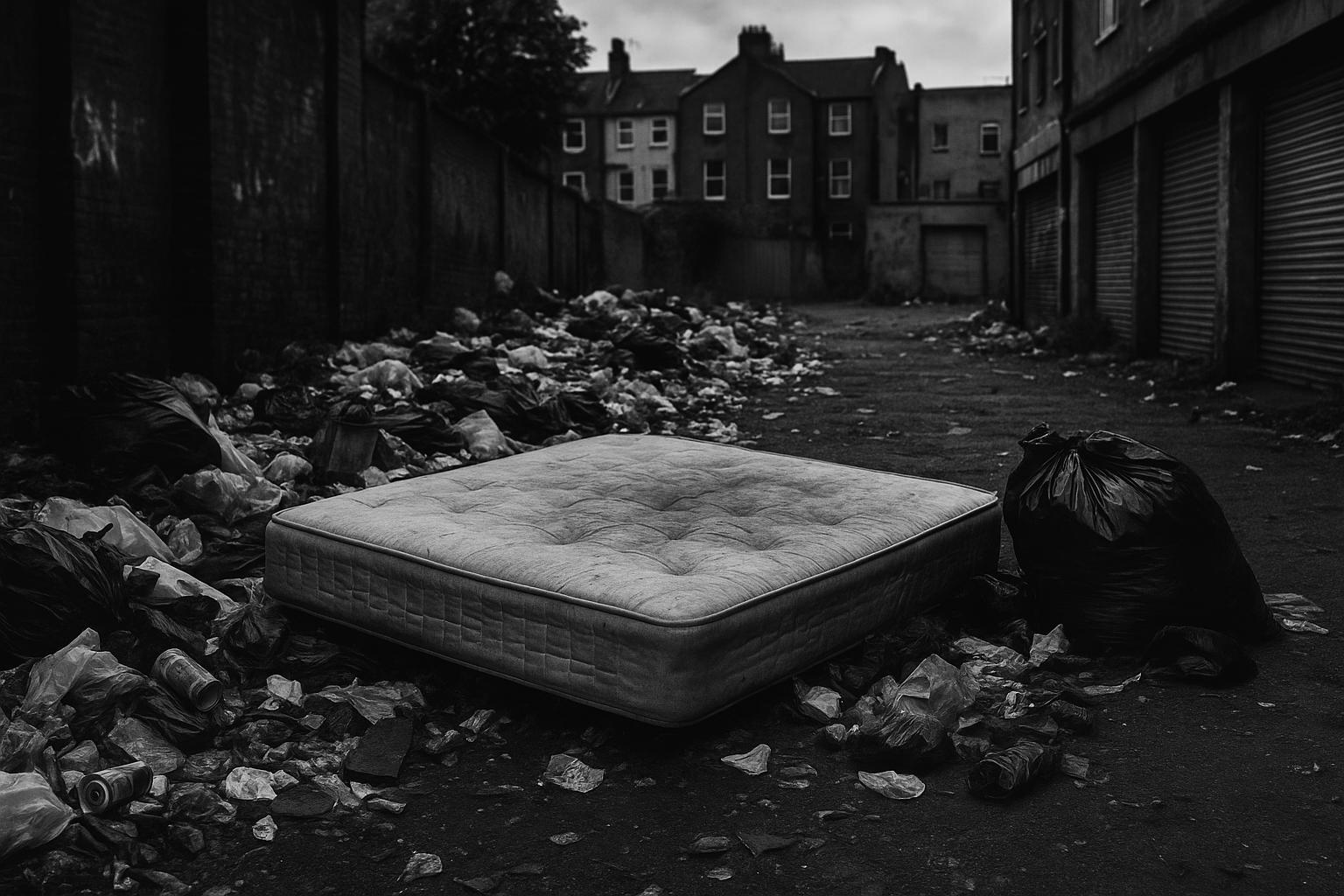With towering piles of rubbish spreading across playing fields and public spaces, Croydon in London has become emblematic of the rising fly-tipping crisis devastating parts of the UK. What might appear at first glance to be an illegal landfill site is in fact a community sports ground marred by heaps of discarded appliances, furniture, and commercial waste. Yet, this is just one facet of the multi-layered challenges facing a borough locals have labelled the ‘Dustbin of London’.
According to data obtained by the Daily Mail, Croydon witnessed 55,192 fly-tipping incidents reported to the local council in the first eight months of this year alone. This figure underlines why the borough ranks as one of the worst in the country for illegal waste dumping. Newly released official figures further detail that for the financial year 2023-2024, Croydon topped the UK chart with 38,163 reported fly-tip cases, outpacing second-worst Camden by 17% and running ten times above the national average. The financial burden of cleaning up the mess was equally staggering, with Croydon council spending over £1 million on rubbish removal efforts.
Despite the scope of this environmental blight, enforcement appears sparse. The council’s release noted a dramatic decline in prosecutions, with only 10 fixed penalty notices issued for fly-tipping between 2022 and 2023. This contrasts sharply with boroughs like Enfield, which recorded thousands of such actions in the same period. Experts point to a dismantling of neighbourhood safety teams and a lack of resources as central to the dwindling enforcement capacity, signalling a breakdown of deterrence mechanisms.
The fly-tipping issue is compounded by wider social maladies. Croydon also records some of London’s highest rates of sexual offences, stalking, and harassment. Police figures indicate over 1,200 sexual assault reports and 2,500 stalking and harassment incidents in the year to March, figures that local activists and residents find deeply alarming. Other sources report Croydon is the most violent borough in London, with over 10,000 violent crimes logged in 2023, a year-on-year rise of 5%. The borough’s overall crime rate sits above the national average with drug-related offences growing by nearly 89%, profoundly affecting community safety and cohesion.
Closely intertwined with these multiple crises are severe financial troubles hit by historic mismanagement. Croydon council is burdened with debts exceeding £1.6 billion and has entered formal bankruptcy procedures multiple times since 2020. The council’s debt servicing alone costs over £70 million annually, restricting the capacity to address mounting environmental and social issues effectively.
Residents like 68-year-old Graham Mitchell, who has personally reported thousands of fly-tipping incidents via the app Love Clean Streets, attribute the disintegration of civic pride partly to a transient population concentrated in temporary accommodation. Many locals also bemoan the rise of ‘cowboy’ waste collectors—rogue operators advertising on social media who illegally dump waste, leaving individuals liable under environmental laws. Beyond aesthetics, such unchecked dumping poses public health risks, with reports of vermin and hazardous materials like asbestos found among the waste.
The impact on everyday life for Croydon’s inhabitants is stark. Accounts from long-term residents reveal a borough where fear and decline have woven into daily existence. Issues range from constant rubbish in alleyways emitting foul odours, to an open drug trade visible even to the police, to escalating personal safety concerns prompting households to adopt defensive measures such as security cameras and keeping makeshift weapons for protection. Local shop owners lament the erosion of business and customer footfall driven by the borough’s increasingly fraught reputation.
Croydon’s challenges represent a potent microcosm of urban decline in parts of modern Britain, where financial insolvency, social fragmentation, and governance struggles intersect to produce a deteriorating quality of life. The council insists it is working to restore fiscal stability and prioritises enforcement against fly-tipping. However, with local elections approaching, observers question whether existing political leadership can reverse the borough’s fortunes or whether new forces, such as Reform UK, might gain traction—despite the curiosity that their chosen local candidate was recently revealed to have been deceased.
In sum, Croydon faces an urgent crossroads. The convergence of environmental neglect, soaring crime, financial distress, and social alienation paints a sobering picture of a once-proud borough slipping into ignominy. Whether it can reclaim its sense of community resilience and public order remains to be seen.
📌 Reference Map:
- Paragraph 1 – [1], [2]
- Paragraph 2 – [1], [2], [3]
- Paragraph 3 – [1], [4], [5], [6], [7]
- Paragraph 4 – [1]
- Paragraph 5 – [1], [4]
- Paragraph 6 – [1]
- Paragraph 7 – [1], [5]
- Paragraph 8 – [1]
- Paragraph 9 – [1]
Source: Noah Wire Services
